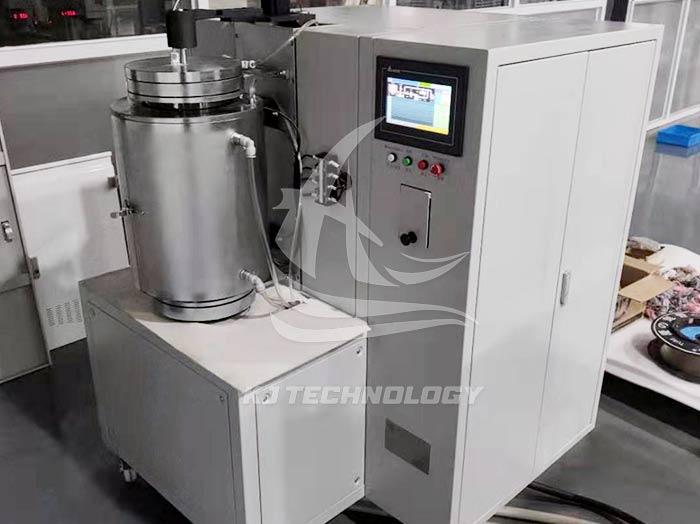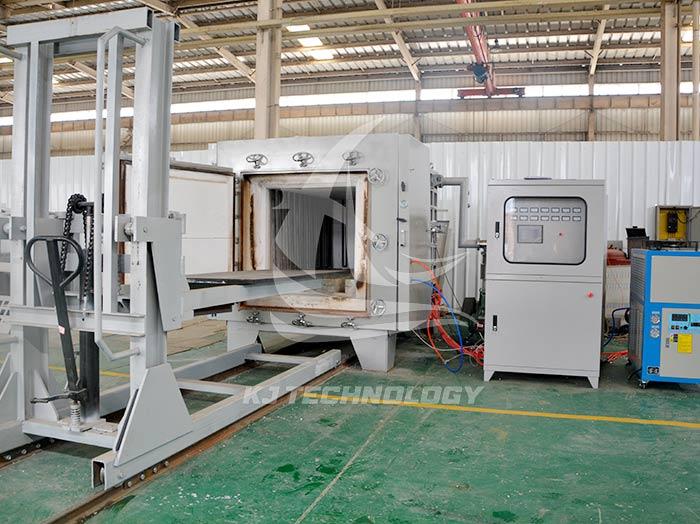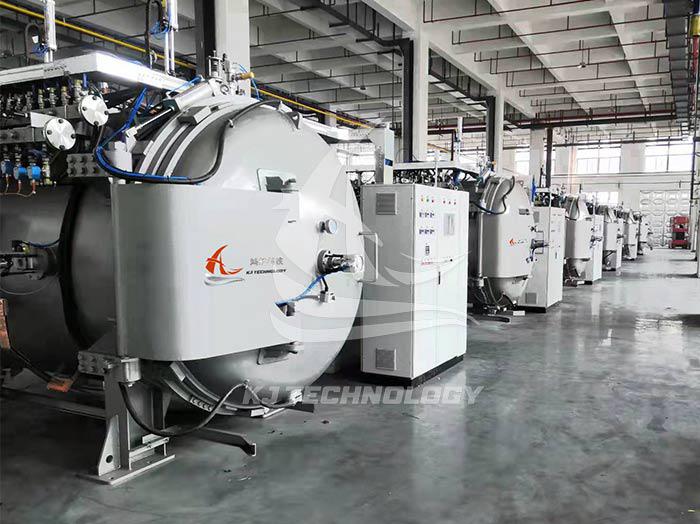What processes can gas vacuum furnaces perform?
 07-29-2025 Author: KJ technology
07-29-2025 Author: KJ technology
Gas vacuum furnaces can achieve various key processes in the battery manufacturing industry, including material preparation, heat treatment, packaging, and testing, as follows:
1. Material preparation process
Vacuum sintering
Application scenario: Used for battery cathode materials such as LiCoO ₂, LiNi ₀ ₈Co₀. ₁Mn₀. The sintering of ₁ O ₂ achieves uniform doping and densification of the material by precisely controlling the oxygen partial pressure.
Technical advantages: It can avoid oxidation in a vacuum environment, improve material purity, and optimize material properties by controlling the atmosphere (such as oxygen and nitrogen). For example, by controlling the oxygen partial pressure within the range of 10-100Pa, LiNi ₀ with a capacity retention rate of up to 98% can be prepared ₈Co₀. ₁Mn₀. ₁ O ₂ material.
Vacuum Chemical Vapor Deposition (CVD)
Application scenario: Deposition of carbon layer on the surface of battery negative electrode materials (such as silicon-based negative electrodes) to enhance material conductivity and cycling stability.
Technical advantages: Vacuum environment can avoid impurity pollution, ensure coating uniformity, and achieve precise control of coating thickness by controlling reaction gases such as methane and acetylene.
2. Heat treatment process
annealing
Application scenario: Used for annealing treatment of battery electrodes or cells, eliminating processing stress, improving material flexibility and electrochemical performance.
Technical advantages: Vacuum environment can avoid oxidation, and uniform annealing can be achieved by controlling temperature gradient to reduce material deformation.
Vacuum solid solution and aging
Application scenario: Used for heat treatment of lightweight battery shell materials such as aluminum alloys and magnesium alloys, optimizing grain structure, and improving material strength and toughness.
Technical advantages: Vacuum environment can avoid oxidation and decarburization, while achieving precise control of material properties through precise temperature and time control.
3. Packaging and testing process
vacuum packaging
Application scenario: Used for vacuum packaging of batteries, ensuring that the electrolyte fully infiltrates the electrode material by vacuuming, while avoiding moisture and gases from the air from entering the interior of the battery.
Technical advantages: Vacuum packaging can improve the airtightness of batteries and extend their service life, especially suitable for packaging soft pack batteries and solid-state batteries.
Vacuum leak detection
Application scenario: Used for sealing detection of battery casings, modules, and components, accurately locating leakage points through pressure changes in a vacuum environment or helium mass spectrometry leak detection technology.
Technical advantage: Vacuum leak detection can ensure the long-term stable operation of batteries, avoiding performance degradation or safety hazards caused by leaks.
4. Special process support
Vacuum injection
Application scenario: During the battery filling process, the air in the tank is eliminated by vacuuming to avoid the generation of bubbles and ensure that the electrolyte is fully filled.
Technical advantage: Vacuum injection can improve the consistency and safety of batteries, especially suitable for the manufacturing of high-energy density batteries.
Low pressure carburizing
Application scenario: In the surface treatment of battery metal components (such as connectors and poles), a surface layer free of oxides and pollutants is formed through low-pressure vacuum carburizing technology to enhance corrosion resistance and wear resistance.
Technical advantages: Low pressure carburizing can reduce gas and energy consumption, while preventing the production of carbon black, suitable for heat treatment of precision metal components.








